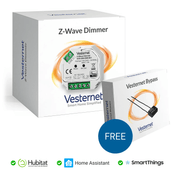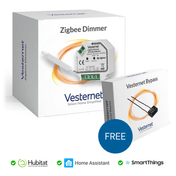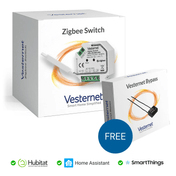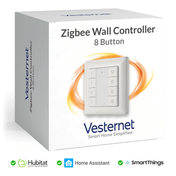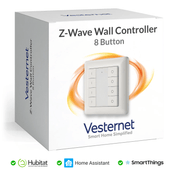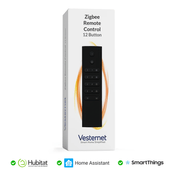Modern smart home installations face wiring challenges, with many UK homes lacking neutral wires in switch locations, creating barriers to smart switch upgrades and forcing homeowners to choose between expensive rewiring or limited smart functionality. This comparison will help you determine which Aqara H1 model suits your home's electrical setup, exploring installation requirements, feature differences, and long-term benefits to ensure you make the right choice for seamless smart lighting control.
As Vesternet's technical experts with extensive experience in UK smart home installations, we've tested both models across various wiring configurations and understand the practical challenges homeowners face when upgrading to smart switches.

Understanding the No Neutral Wire Model: WS-EUK01 Breakdown
The Aqara Smart Wall Switch H1 no neutral model (WS-EUK01) represents a breakthrough solution for UK homes lacking neutral connections at switch locations. This clever design eliminates the need for neutral wires by utilising the switched circuit to complete its power requirements, making it compatible with most traditional UK wiring setups installed before modern electrical standards.
Key Features of the No Neutral Model
- Zigbee 3.0 wireless communication for reliable smart home integration
- Single-channel relay control for lights and fans
- Hub-based operation with remote app control and timing functions
- Local automation capability even during network disruptions
- Retrofit-friendly design requiring no rewiring in most installations

Exploring the Neutral Wire Model: WS-EUK03 Advanced Features
The Aqara Smart Wall Switch H1 with neutral wire (WS-EUK03) leverages traditional electrical connections to unlock advanced functionality beyond basic switching. This model requires a neutral wire connection but provides enhanced capabilities including power monitoring and 2-way switch support, making it ideal for homes with modern electrical installations.
Advanced Capabilities Available
- Real-time power monitoring with consumption statistics and curve diagrams
- 2-way switch setup compatibility for multiple control points
- Round wall box support for versatile installation options
- Enhanced load handling capabilities with more stable operation
- Comprehensive smart home integration through Zigbee 3.0 protocol
Wiring Requirements and Installation Flexibility Compared
The fundamental difference between these models lies in their electrical requirements, which directly impacts installation complexity and compatibility. Understanding your home's existing wiring setup becomes crucial when choosing between the no neutral and neutral wire switch options.
No Neutral Wire Installation Requirements
- Works with live and switched live connections only
- Compatible with most pre-1990s UK homes lacking neutral wires
- Simple two-wire installation process
- Limited to single-point control configurations
The no neutral model excels in retrofit scenarios where accessing neutral wires would require extensive rewiring or wall damage. However, this convenience comes with trade-offs in advanced functionality, as the switch cannot continuously monitor power consumption or support complex switching arrangements without proper neutral connections.
Neutral Wire Model Installation Considerations
- Requires live, neutral, and switched live wire connections
- Compatible with modern UK electrical installations
- Supports 2-way switching with additional wiring complexity
- Accommodates round wall boxes for flexible mounting options
Real-World Performance: Responsiveness and Reliability Testing
Both models deliver reliable Zigbee 3.0 performance in typical home environments, but their operational characteristics differ based on power supply methods. The no neutral model maintains consistent response times despite its unique power arrangement, whilst the neutral version provides more stable operation under varying load conditions.
Performance Metrics Comparison
- Switch response times: Both models achieve sub-second activation
- Network stability: Neutral version shows slightly better connectivity consistency
- Automation reliability: Both maintain local hub connections during internet outages
- Load compatibility: Neutral model handles wider range of connected devices
The power monitoring exclusive to the neutral wire switch provides real-time consumption data with impressive accuracy, generating detailed power curve diagrams that help identify energy-efficient usage patterns. This feature proves invaluable for households focused on energy management and optimising electricity costs through informed usage decisions.
User Experience Differences
- Setup complexity: No neutral model offers simpler initial installation
- Feature accessibility: Neutral version provides comprehensive control options
- Long-term reliability: Both models demonstrate consistent performance over extended use
No Neutral Model: Advantages and Limitations
The no neutral wire approach delivers significant benefits for homeowners seeking smart functionality without electrical modifications. This model excels in rental properties, older homes, or situations where rewiring costs outweigh smart home benefits, providing an accessible entry point into automated lighting control.
Primary Advantages
- Universal compatibility with existing UK wiring configurations
- Installation requires no neutral wire access or rewiring
- Cost-effective smart home upgrade solution
- Suitable for temporary installations in rental properties
However, the no neutral design introduces certain limitations that may impact advanced smart home applications. The absence of power monitoring means you cannot track energy consumption or identify inefficient devices, limiting your ability to optimise household energy usage through data-driven insights.
Notable Limitations
- No power monitoring or consumption statistics available
- Single-point control only, no 2-way switch support
- Limited compatibility with certain LED bulb types
- Reduced advanced automation possibilities
Neutral Wire Model: Benefits and Drawbacks
The neutral wire switch unlocks comprehensive smart functionality through its traditional electrical connection approach. Power monitoring capabilities provide detailed consumption insights, helping households make informed decisions about energy usage whilst supporting complex switching arrangements for multi-point control scenarios.
Key Benefits
- Real-time power monitoring with detailed consumption statistics
- 2-way switch compatibility for multiple control locations
- Enhanced automation possibilities through comprehensive data access
- Stable operation across wide range of connected loads
The installation requirements present the main drawback, as accessing neutral wires may prove challenging or impossible in older properties. This limitation could necessitate costly electrical work or prevent installation entirely, making the neutral wire switch less accessible despite its advanced capabilities.
Installation Challenges
- Requires neutral wire access at switch location
- May need electrical modifications in older homes
- More complex wiring arrangements for 2-way setups
- Higher installation complexity for DIY enthusiasts
Choosing Based on Your Home Setup and Smart Goals
Your existing electrical infrastructure and smart home ambitions should guide your decision between these models. Consider both immediate installation feasibility and long-term functionality requirements when evaluating which Aqara H1 variant aligns with your household needs and technical capabilities.
Ideal Scenarios for No Neutral Model
- Rental properties where permanent modifications aren't permitted
- Older homes without accessible neutral wires at switch locations
- Budget-conscious installations focused on basic smart lighting control
- Temporary smart home setups requiring easy removal
The no neutral option suits homeowners prioritising simplicity and retrofit compatibility over advanced features. If your primary goal involves remote lighting control and basic automation without energy monitoring requirements, this model provides excellent value whilst maintaining installation flexibility across diverse property types.
Neutral Wire Model Best Applications
- Modern homes with accessible neutral wires throughout
- Energy-conscious households wanting consumption monitoring
- Complex lighting setups requiring 2-way switch control
- Comprehensive smart home systems with advanced automation needs
Professional installations or new construction projects often benefit from the neutral wire switch's comprehensive feature set. The power monitoring capabilities prove particularly valuable for households focused on energy efficiency, providing actionable insights for optimising consumption patterns and identifying inefficient appliances through detailed usage analytics.
Decision Framework Considerations
- Assess current electrical setup and neutral wire accessibility
- Evaluate long-term smart home expansion plans
- Consider installation complexity tolerance and technical expertise
- Determine importance of power monitoring and advanced features
Making Your Smart Switch Decision
Both Aqara Smart Wall Switch H1 models deliver reliable Zigbee 3.0 connectivity and seamless smart home integration, but your choice ultimately depends on your home's existing wiring and your smart home ambitions. The no neutral version excels in retrofit scenarios where rewiring isn't feasible, while the neutral version offers advanced features for homes with proper wiring infrastructure.
Consider your priorities: if simple smart lighting control is your goal and you have standard UK wiring without neutral connections, the no neutral model provides an elegant solution. However, if you want comprehensive power monitoring, 2-way switch compatibility, and future-proofing for advanced automations, the neutral version justifies the additional installation requirements.
Ready to upgrade your lighting control? Browse both Aqara Smart Wall Switch H1 models in our collection to find the perfect match for your home's wiring configuration and smart home vision.










